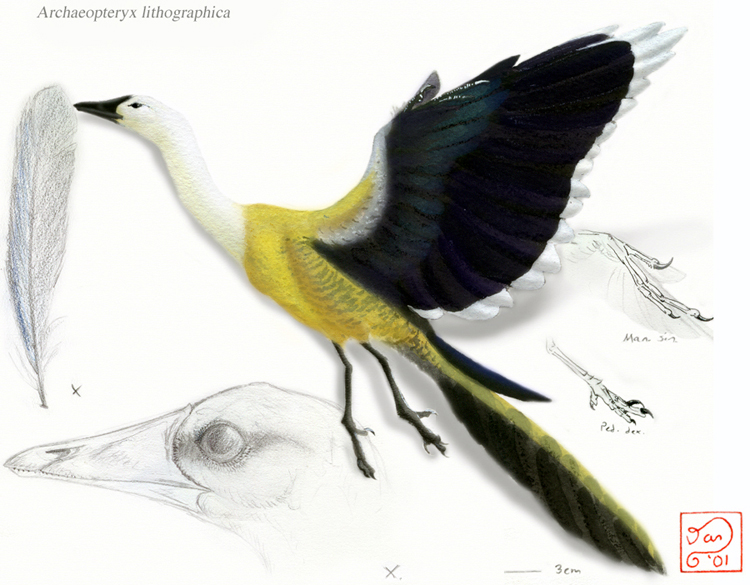
Archaeopteryx lithographica

A. lithographica ranges across a large group of semiarid islands on the northern portion of the Tethys Sea, in what will one day become Europe. This European archipelago is home to many archosaurs, such as Compsognathus longipes , a relative of A. lithographica, and many pterosaurs, flying archosaurus much more common than, and only distantly related to, birds like Archaeopteryx.
A. lithographica is a crow-sized seabird, a long-legged, long-armed jack-of-all trades large (if not powerful) wings, a long, counterbalancing tail, and a mouth filled with tiny, conical teeth. With this dentition and wings that function as well under water as above it, A. lithographica is an competent fisher, although it is by no means restricted to the water for its food. , A. lithographica eats any protein it can catch; mammals, lizards, insects, and fish are all welcome nourishment for this opportunistic hunter.
Thanks to Martin Barnett for general helpfulness and to Ray Stanford, or cource.
Other sites containing pertinent information:
® Daniel Bensen 2001
This image modified by Adobe Photoshop
Back to OPUS: Dinosaur